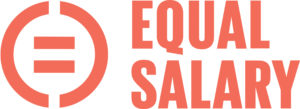Many of the recent geopolitical, civil, and social actions and movements have, whether by virtue or provocation, rather powerfully ushered gender equality to important political and economic fora. Argentina’s G20 Presidency addressed gender transversally, while the G7 Summit in Charlevoix, Canada issued a public engagement paper on gender equality and women’s empowerment. These high-level political commitments complement the still rather potent #MeToo and #AidToo movements and are clear signals that change is in the making: individuals, organizations, and governments are inevitably heading towards new norms. However, redressing the age-old, highly institutionalized imbalance of gender-based power relations requires a whole-of-society approach. Tackling some of the more concrete manifestations of this imbalance in specific key fields could provide the impetus needed to sustain impact over time.
Global Health, for example, aims to improve population health and achieve equity in health for all people worldwide. It aims to ensure that all human beings can exercise their right to health. It goes without saying that gender equality should be a given, inherent in the visions and missions of the many institutions and organizations working in global health. While in principle this is the case, in practice, one of the most obvious indicators – equal pay, and importantly measurable proof of it – is not yet the norm.
While major donor organizations are placing requirements that stipulate gender equality-related issues such as sexual harassment and safeguarding policies for staff, partners, and beneficiaries, we only slowly begin to see equal pay, for example in the form of requests for transparency of existing wage gaps between men and women, making its way onto the list of requirements.
So what exactly is being done to ensure that equal pay is not just a principle, pencilled in to a policy document and proffered primarily to cover liability or tick a box in a report? What concrete and replicable mechanisms are there that aim to measure policy, but more importantly practices over time, preventing inequalities, setting a gold standard, and bringing true organizational culture change across the entire global health field?
A recent important survey on gender equality policies and representation in the global health sector showed relatively grim results overall with only 18 of the 140 organizations receiving high scores. The first edition of The Global Health 50/50 Report in 2018 mentioned ´implementing remuneration systems that ensure equal pay for equal work’ as a recommendation for workplace policies with specific measures for gender equality. While the report measured the percentage of organizations that provide information on their gender pay gap (14%), it did not go any further to measure or qualify salary transparency policies, nor did it propose a standard mechanism for implementation of such policies. We do hope though that future editions of the report will feature equal pay as a stand-alone domain, with more elaborate indicators.
Why? Because equal pay – not as a principle or even as a policy, but as a certifiable practice with a validated methodology – is one of the key elements needed to ensure that the summation of gender equality is made up of interconnected forms of checks and balances. The prospect of introducing and expanding EQUAL-SALARY certification to all global health organizations – not only those included in the Global Health 50/50 Report, but all health-related research and development, as well as public health organizations worldwide – would provide an opportunity to achieve lasting impact. An impact for those working in global health and beneficiaries alike, positively affecting not just women, but other disadvantaged groups, and society as a whole.
So if global health stands only to gain from operationalizing gender equality commitments and taking bold steps towards EQUAL-SALARY certification, is there any justifiable reason not to step up to the plate today? We think not.
Grabrielle Landry Chappuis et Michaela Told



